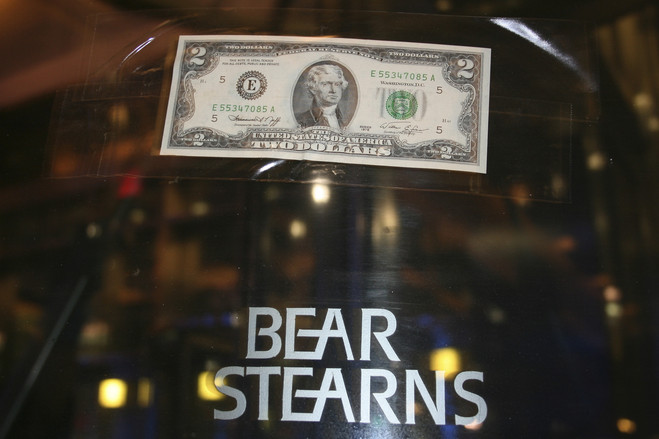I nearly missed this Wall Street Journal column that slipped by on Christmas Day: Eleven Years in the Making: Breaking Even on JPMorgan’s Purchase of Bear Stearns. It’s about a broker who bought Bear Stearns in the middle of its epic collapse from about $171.51 (record closing price on January 12, 2007) to $30, on its way to a $2 fire sale to J.P. Morgan. (Eventually, JPM upped its bid to $10).
The broker, who bought BSC mid-collapse at $30, never sold it. It took a mere 4,209 days for the trade to reach breakeven.
This is one of those situations that with the benefit of hindsight, offers future lessons for investors. But rather than me pontificating on the trade, I thought I would reach out to some trader friends and fund manager colleagues to get their views. But as long as I am asking them, let me pose the same query to you: What do you thought was wrong with the trade: What lessons do you think we can take from the Bear collapse circa 2008 and this trade?
Some of my questions:
1. What should you do when your original reason for owning something is no longer valid?
2. What is the opportunity cost of sitting in a bad holding?
3. What Should You Do When You Realize a Trade is a Mistake?
4. What is your edge in this trade?
5. Should you let a trade turn into an investment?
6. Can you catch the proverbial falling knife?
7. What plans do you have if the position works out? What if it goes against you?
If you have any thoughts on those questions, please share them here: #4209Days
I will try to cobble together something on this by next week . . .


